Author ········· Seema Aggarwal
Photographer.....Joseph Barrett
Location ········Repton Boxing Club, London
Published ······ Oct 2019
Language ······· English
Photographer.....Joseph Barrett
Location ········Repton Boxing Club, London
Published ······ Oct 2019
Language ······· English
Being Accountable
An intriguing aspect of my training is that it exposes a lot about a person. When you observe a person training, you get an insight into their attitude, their ego, their hardship or privilege, their will and their work ethic. Prior to taking up a competitive sport, I would observe these traits in people at work, but it took longer for me to reach a certain conclusion, particularly when considering the disparity between what people said and what they were actually doing. Training on the other hand? It is very raw. I believe that in striving to maintain the endurance within any training session, it is able to strip away the illusion we tend to paint with our words and reveal a lot about who we actually are. I love that about my own training because, unlike anything else before, it has been my reason and response to holding myself to account by exposing my very own shortcomings. For example, I now find myself less inclined to any savoir-faire when it comes to judging others, I would much rather quietly register my judgements whilst observing you for three minutes on the punch bag.
This has instilled a belief within me that one must hold himself/herself to a realistic account before they are inevitably held to account. And sport, boxing, in particular, has to be considered as one of the greatest teachers. I have learned that if you don’t deliver on what you expected from yourself in boxing, the consequences are and will continue to be painful reminders. Since our greatest opponent in boxing is our own self, I too continue my journey with the struggle of achieving the harmony between how I describe my ability and what it is that I actually am.
![]()
I see boxing as a raw and vivid yardstick at determining when I examine a person's principles. The principle of showing up for training shouldn't change when you leave the gym; in fact, an athlete’s principles should undergo a process of being broken until they become unbreakable. It is through humility that I continue to approach my boxing attentively and reflectively. The struggle I have chosen to endure in seeking understanding is eloquently highlighted by the words of Cus D’Amato, who once said that the way you fight your fights will be the way you live your life. Boxing to me has to be considered the great metaphor for life and I will be its diligent student filled with a hunger to develop. The satisfaction I have found with regard to my need for personal growth and development, through boxing, has always been something universal and translatable to all aspects of life. I feel boxing holds a mirror to who and how I really am, and when I identify a problem in my approach to boxing, I can often find the parallel in my life. As I begin to address it in my life, I see improvements in the way I fight.
![]()
![]()
An intriguing aspect of my training is that it exposes a lot about a person. When you observe a person training, you get an insight into their attitude, their ego, their hardship or privilege, their will and their work ethic. Prior to taking up a competitive sport, I would observe these traits in people at work, but it took longer for me to reach a certain conclusion, particularly when considering the disparity between what people said and what they were actually doing. Training on the other hand? It is very raw. I believe that in striving to maintain the endurance within any training session, it is able to strip away the illusion we tend to paint with our words and reveal a lot about who we actually are. I love that about my own training because, unlike anything else before, it has been my reason and response to holding myself to account by exposing my very own shortcomings. For example, I now find myself less inclined to any savoir-faire when it comes to judging others, I would much rather quietly register my judgements whilst observing you for three minutes on the punch bag.
This has instilled a belief within me that one must hold himself/herself to a realistic account before they are inevitably held to account. And sport, boxing, in particular, has to be considered as one of the greatest teachers. I have learned that if you don’t deliver on what you expected from yourself in boxing, the consequences are and will continue to be painful reminders. Since our greatest opponent in boxing is our own self, I too continue my journey with the struggle of achieving the harmony between how I describe my ability and what it is that I actually am.
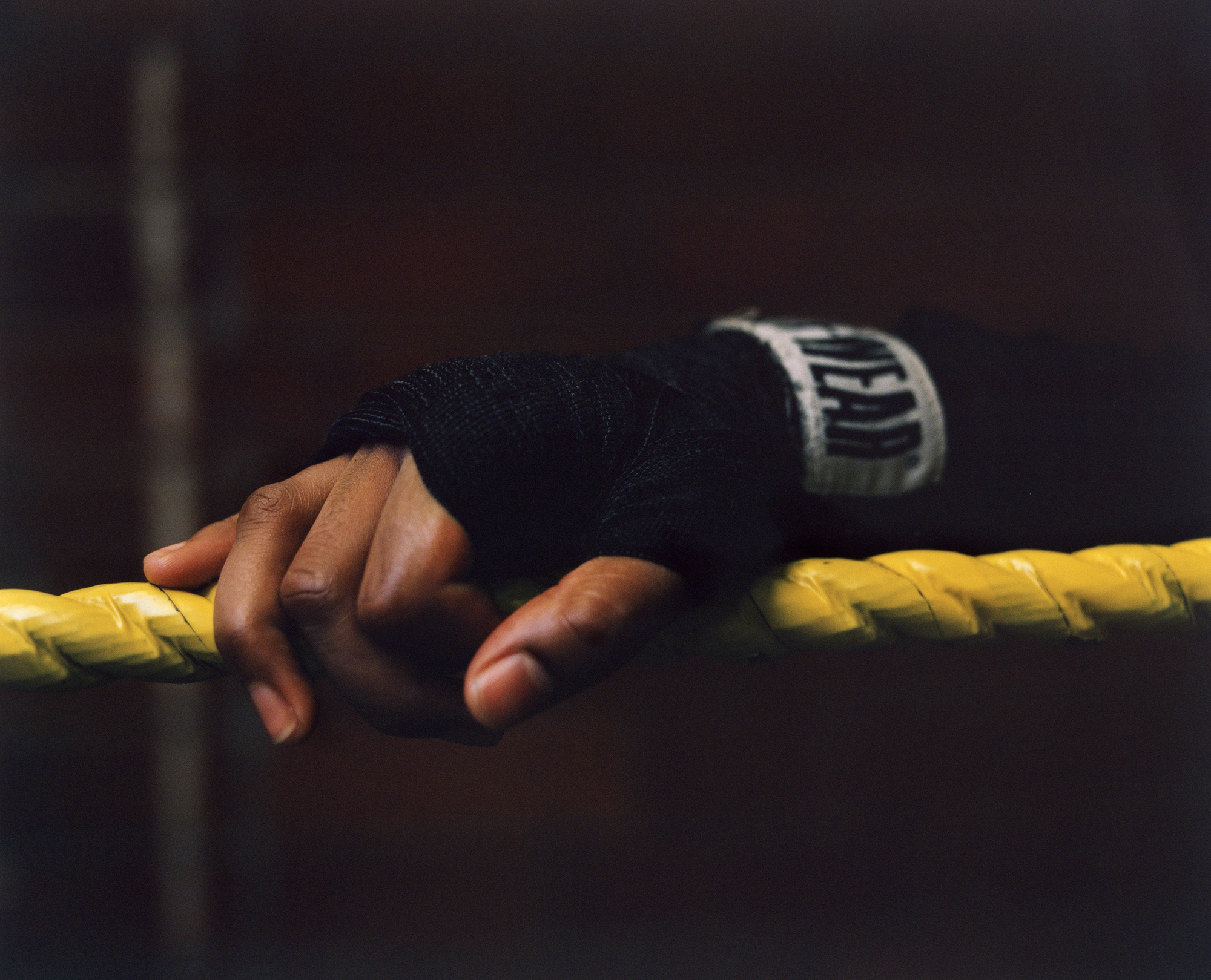
I see boxing as a raw and vivid yardstick at determining when I examine a person's principles. The principle of showing up for training shouldn't change when you leave the gym; in fact, an athlete’s principles should undergo a process of being broken until they become unbreakable. It is through humility that I continue to approach my boxing attentively and reflectively. The struggle I have chosen to endure in seeking understanding is eloquently highlighted by the words of Cus D’Amato, who once said that the way you fight your fights will be the way you live your life. Boxing to me has to be considered the great metaphor for life and I will be its diligent student filled with a hunger to develop. The satisfaction I have found with regard to my need for personal growth and development, through boxing, has always been something universal and translatable to all aspects of life. I feel boxing holds a mirror to who and how I really am, and when I identify a problem in my approach to boxing, I can often find the parallel in my life. As I begin to address it in my life, I see improvements in the way I fight.
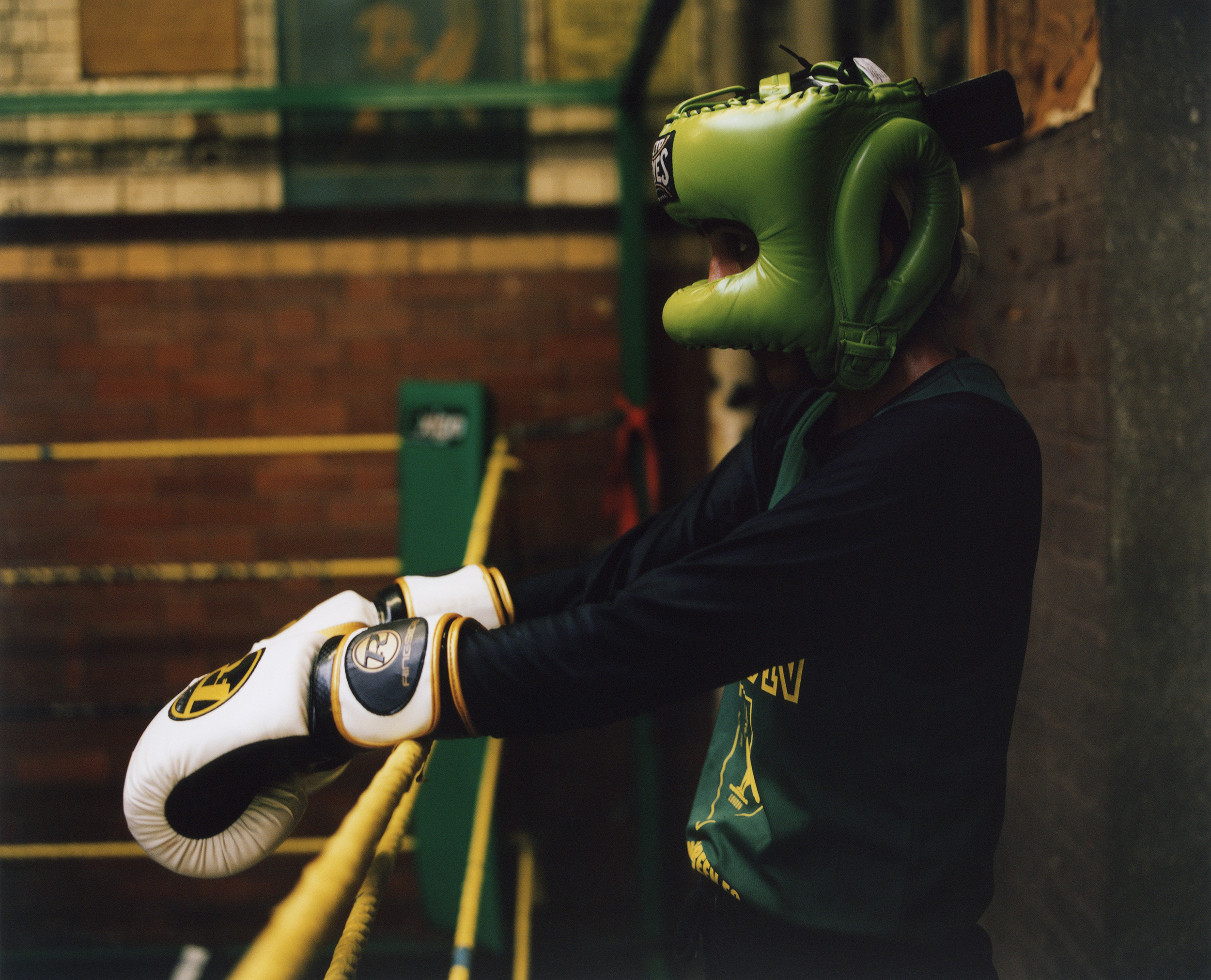
“I have learned that if you don’t deliver on what you expected from yourself in boxing, the consequences are and will continue to be painful reminders.”


“I didn't quit; in life, I knew very well that I hate to quit. I have struggled, I have even lost. But quitting is not something I do. It isn’t in me, especially when I know I have the potential. “
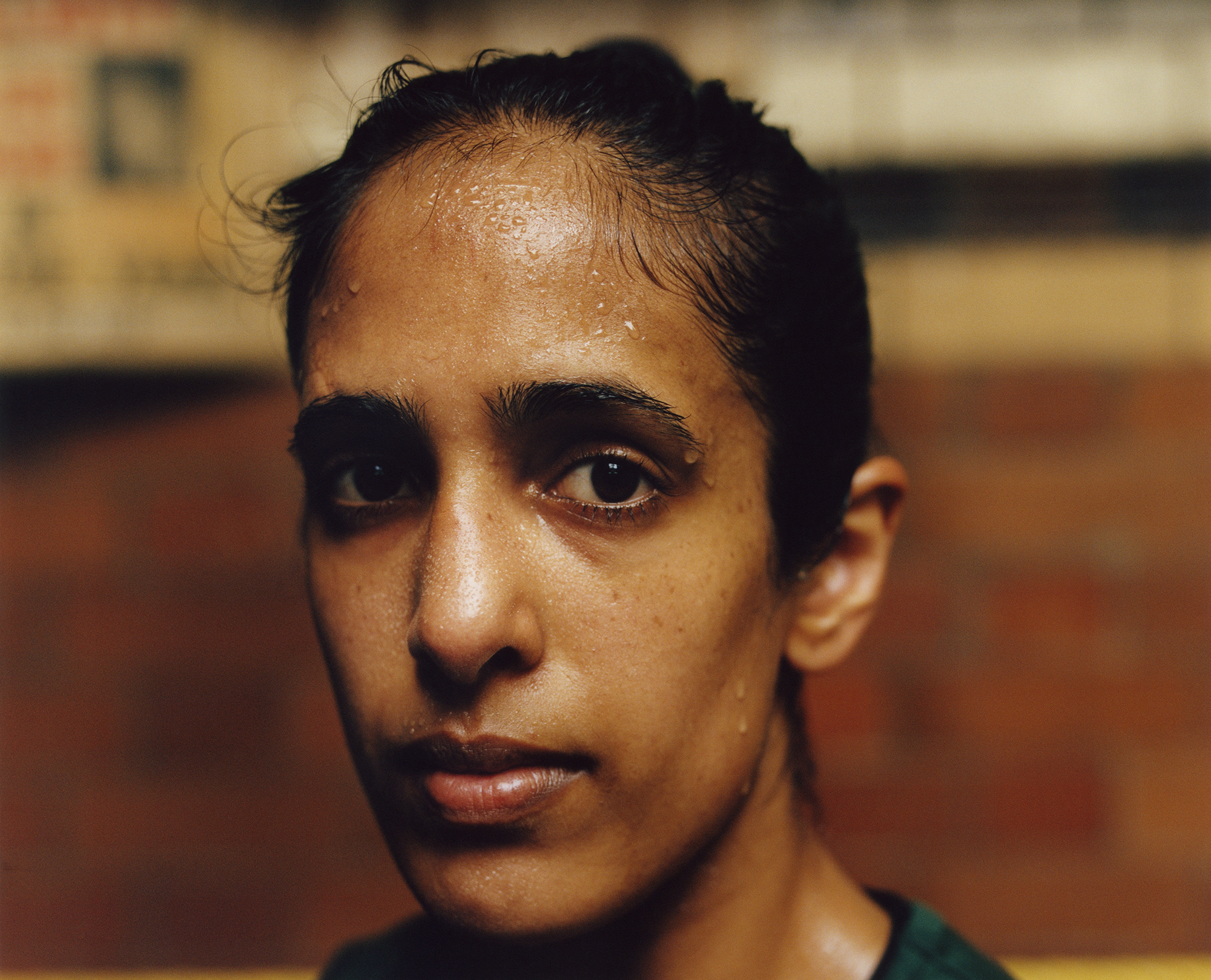
While learning more about some of the major world religions I was able to read and discover that the prophet in Islam is similarly guiding his followers to the very same inward journey of accountability by saying; 'You do as you please but remember, you will die the way you lived! You will die just like you lived, and you will be resurrected on the Day of Judgement just like you died.' To me everything has relevance and I hope that I am able to share lessons in overcoming some of the difficulties I have faced because my very own influences have come from many different places. It humbles me to appreciate the responsibility that my mother upheld as a single parent, the courage my friend shows in dealing with mental health issues, or the selfless dedication I see in someone like Derrick, my coach, whose commitment has had such a positive impact on me, and on the health and wellbeing of those he works with. My club coaches volunteer their time every week to help many other boxers like me. I recall two of the coaches at my club, Steve and Julian, driving me for over six hours just so that I could get the experience of another bout under my belt. Lionel, another one of my club coaches, called me the morning after I won a major tournament and spent nearly an hour discussing and analysing my performance with me so I could get back into the gym with the right focus. Boxing has offered me a lot, in terms of character-building and adopting a more considered approach to my life; what I believe, why and where it comes from. What I have to give and where I draw the line. How I treat others, but also how I treat myself. If I am ever able to inspire the way I have been fortunately inspired, that is when I will feel a sense of achievement within the sport.
In one of my early spars, I remember being hit continuously for four rounds. My coach Derrick said to me that I have a lot of work to do but the one positive was that I didn’t quit. The duty to define who we are is delivered by that intimate part of us that knows what we are capable of even if no one else is able to recognise it. Moreover, our greatest opponent will find victories when we lose that self-belief. When I was walking home afterwards, it felt like an easy opportunity to give up, but I felt compromised because of my principles. Derrick’s words highlighted a truth that would force me to either respect him for recognising my potential or let the experience dissolve the very foundations upon which I have established my principles of
self-worth.
I didn't quit; in life, I knew very well that I hate to quit. I have struggled, I have even lost. But quitting is not something I do. It isn’t in me, especially when I know I have the potential. Some people will say “it’s just a sport, lighten up”, but for me, it isn’t about boxing. It’s about commitment, loyalty, this is about my dignity and integrity, this is to do with my purpose and my convictions. This is much less about anyone else and everything to do with what I claim to understand about myself.
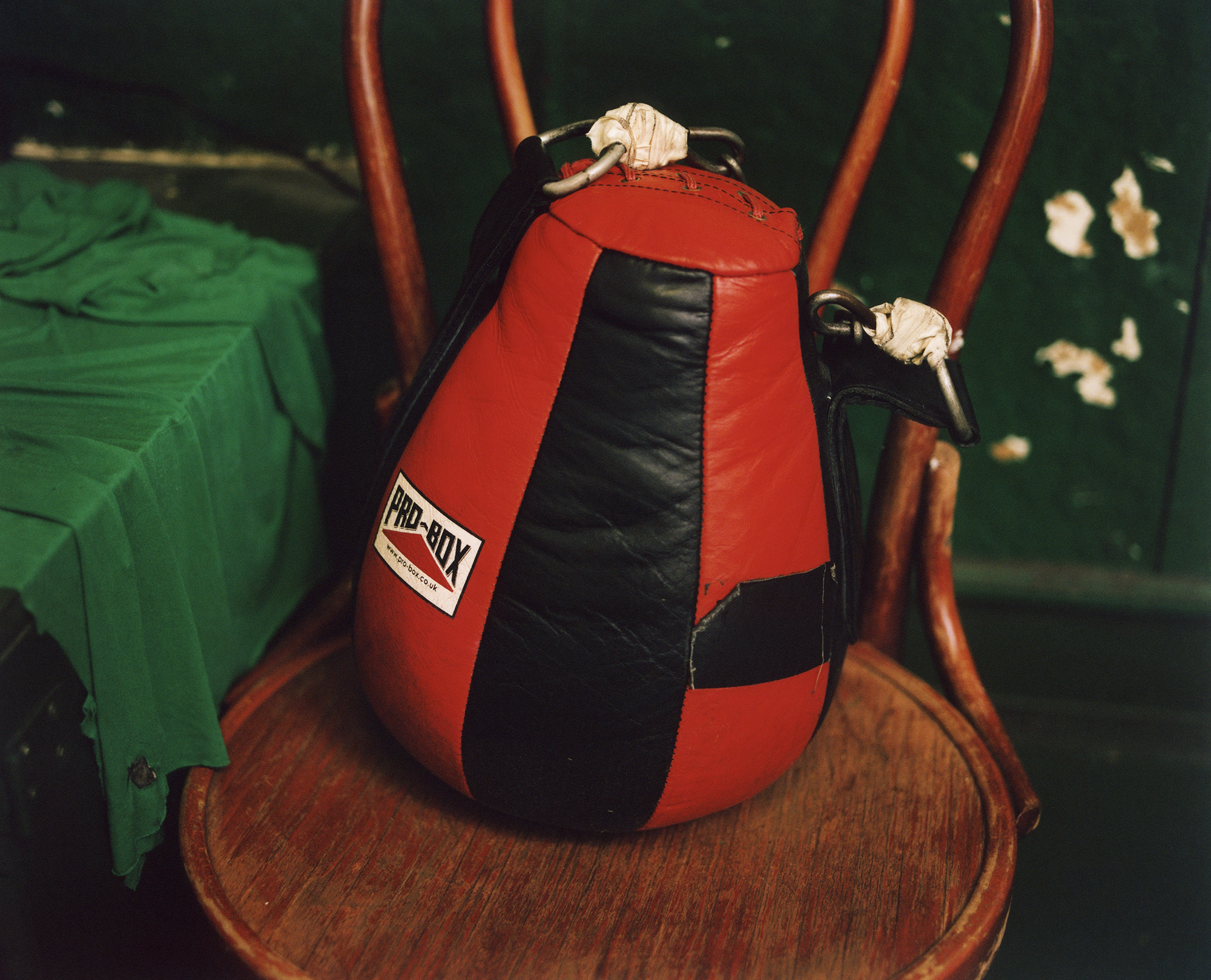
Post fighting sessions would usually be followed by me giving a passionate analysis to Derrick which would typically consist of a critical breakdown of what I was intending to do, though it would go in one ear and out of his other. He taught me the importance of demonstrating my understanding through practice, as a more effective form of communication that shifts from any hypothetical list of to-do’s to something more grounded. I see a great value now in his reluctance to engage my naivety. It has taught me a lot about self-awareness, while his patient approach has been a valuable lesson in humility that helps me to shape and improve all aspects of my life. When I go to my club, I am now attentive towards what I say and how much I say, and I am sure that at times this has been perceived as arrogance. But I don’t mind because I know that arrogance is not the intention so, as is similar in the mastery of any discipline, balance is the key. My focus remains to improve on the work that I put into my sessions while holding myself to account and taking advantage of the feedback from my coaches.
I have often found that the extreme aspects of boxing are used to colour the sport in the minds of many people. Amateur boxing has made many advancements from its primitive form in ancient Greece to its later form of bare-knuckle prizefighting and it is important to appreciate that boxing continues to evolve into a safer sport today, with improvements in all aspects of the sport. Of course, it is not difficult to make bold assumptions about a sport like boxing and the people who participate in it but, like with anything, what you see on the surface is not always a true reflection of the entire picture, and it is up to us to decide the criteria that we use to form our
judgements.
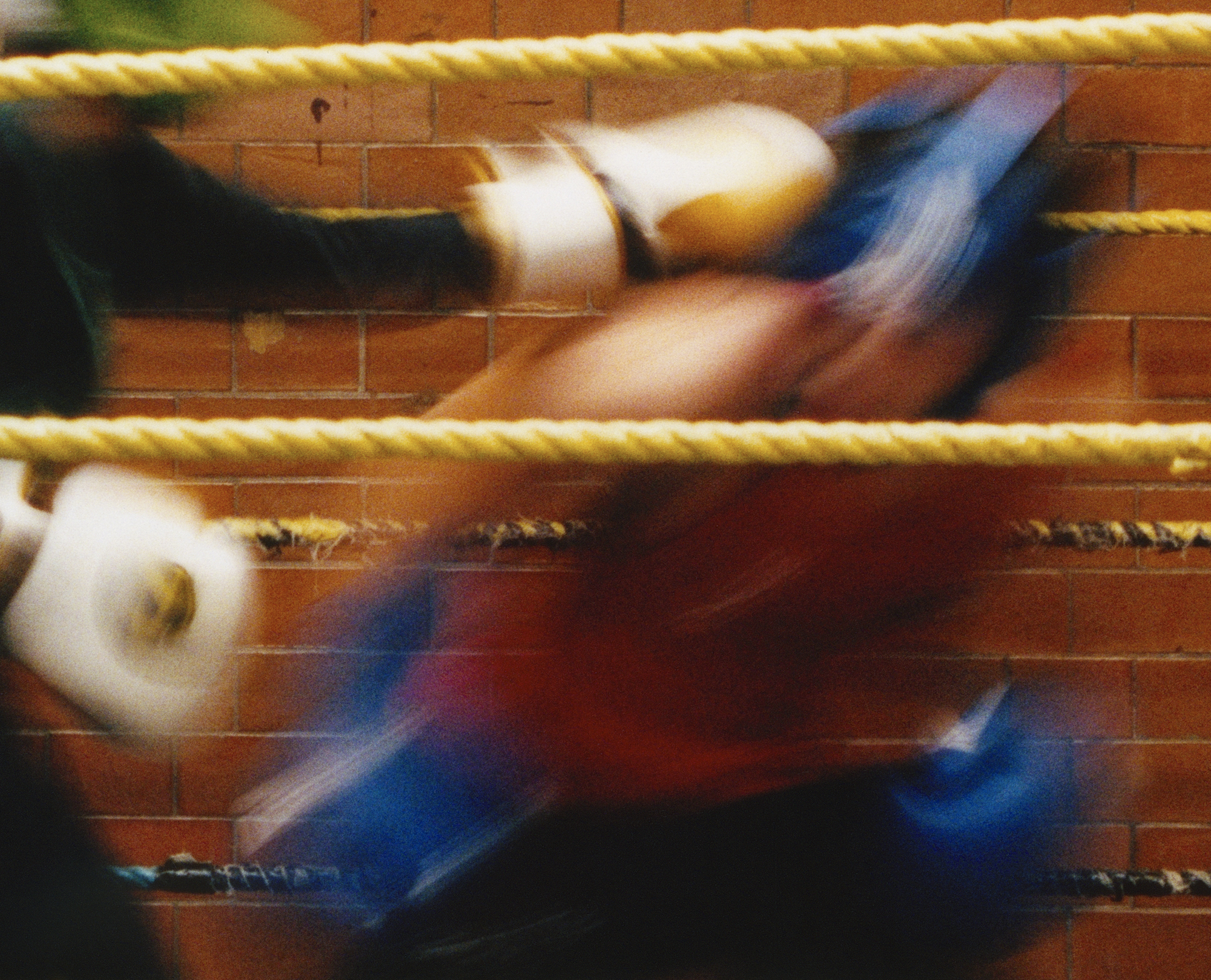
I am definitely someone who has an appreciation of some of the consequences that come with participating in a sport like boxing. I feel a lot more at ease now with the judgements of others and passing comments, that once may have bothered me or provoked a need within me to justify my actions. It is quite common, across all cultures, to place more value on the things we get paid for. As an amateur boxer I don’t get paid to box. I don’t have sponsors or receive any endorsements. People can’t always appreciate why I would give up a comfortable monthly salary to just about make ends meet so I can train more, in a sport that is supposed to be for men. The assumption tends to be that I must be aggressive, downtrodden or trying to release stress. Yet it was neither of these things that brought me to boxing. The growth of women’s boxing is fascinating and I see a lot of women, particularly in their late 20s and early 30s, significantly contributing to this growth. The women I have met are not aggressive or downtrodden. They are friendly, focused, strong and on point with putting the work in towards what they want. Being of Indian heritage, it has also been a pleasure for me to read about the journeys of other remarkable female athletes like Geeta Phogat, Deepika Kumari and Mary Kom. My mother always told me that you come to this world with nothing and you leave with nothing. The peace and satisfaction I feel from continuing the attempts to fight my own desires is definitely worth something to me.
For me, boxing is the ultimate discipline. It is about exhibiting certain traits in the ring and then being able to step out and have the discipline and humility to demonstrate the opposite. That’s why you can fight your friends. It doesn’t mean it’s easy, but it’s a measure of your mindset and your discipline. As much as you demonstrate bad intentions, deception and show no mercy in the ring, can you equally demonstrate good intentions, loyalty and forgiveness in your life? If you can, then I think you are on a good path to understanding the art of boxing. That’s what I’m working towards in training and that’s what I will hold myself accountable to, in the gym and in
life.
@seemaaggarwal
Prioritising the ‘Professionals’:
How semantics are used to systematically restrict women to amateur status in sport.
By Kelly Macbeth Mackay
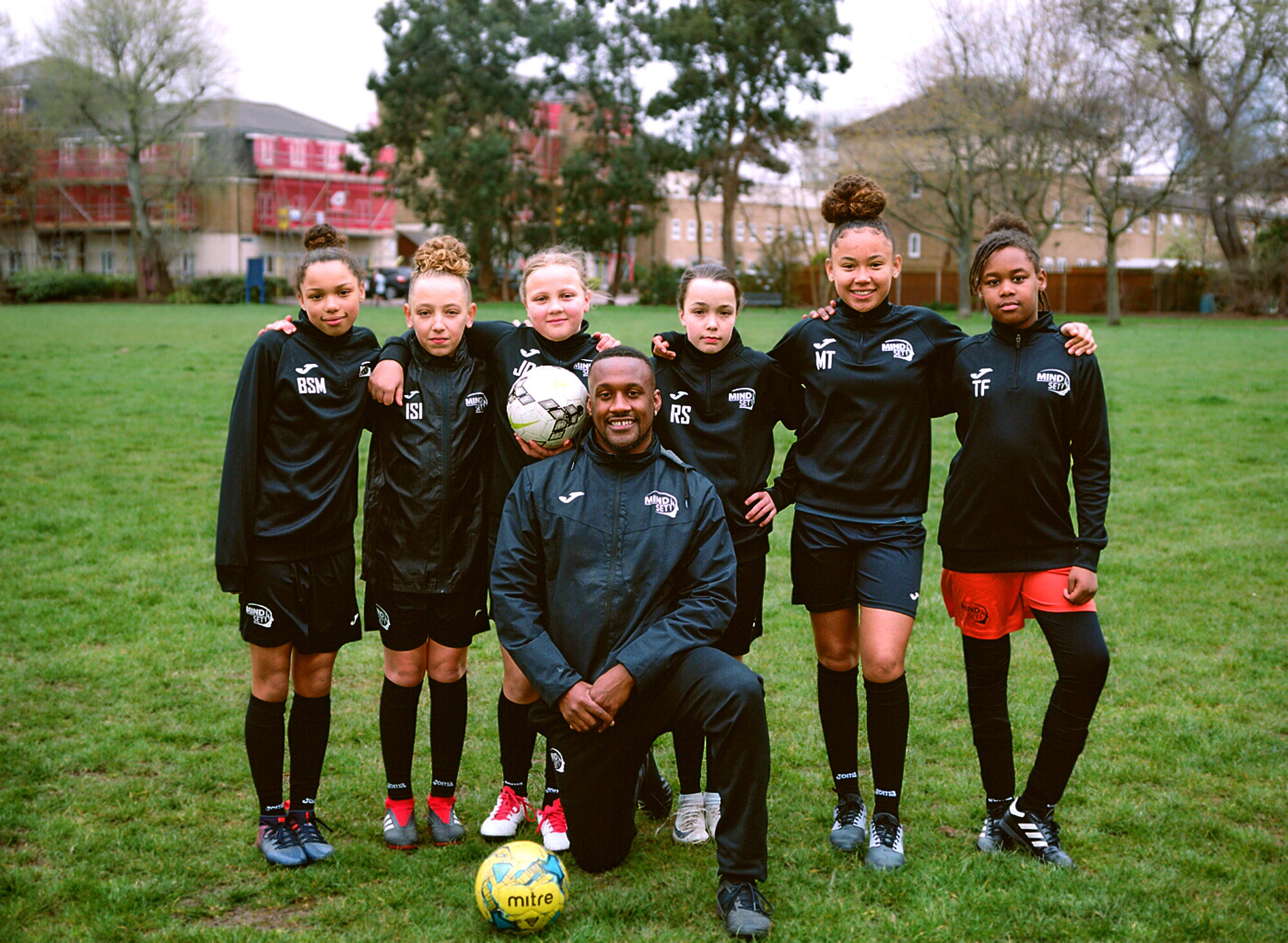 Halftime London collaboration with Mindset FC – photograph by Eliza Hatch
Halftime London collaboration with Mindset FC – photograph by Eliza HatchThe past two weeks have seen a series of bans in women’s sport due to the UK’s second COVID- 19 lockdown. It was confirmed by CEO Ben Morel, that the Women’s Six Nations Rugby tournament would be “impossible to conclude due to the sport’s amateur status”, with there being no mention of concern for the men’s tournament in February 2021. The week prior, the Football Association (FA) ruled that girls at elite regional talent academies and clubs are suspended from play for four weeks, while their male counterparts are not.
In response to this:
"Baroness Campbell, the FA's director of women's football, said the situation reflected that work still needed to be done in the women's game. The FA's ruling has sparked widespread anger across the women and girl’s game as it seemingly contradicts government guidance, which stipulates that an elite athlete includes any person “aged 16 or above and on an elite development pathway.” The Government is unsure and even baffled by the FA's decision to omit girls' academies, as girls aged 16 in elite pathways should qualify for the exemption in the same way boys do.” – Telegraph Sport
After the initial ban, nationwide outrage flooded the media and challenged the FA on their discriminatory decision, which then pressed them to readdress the ban by telling “girls academies they can reopen during lockdown if they are able to meet elite protocols, but admitted they doubt many will have the resources to do so.”
This acknowledgment of lack of resources not only highlights the known disparity between the developmental frameworks for boys and girls football, but also questions why these programmes are not having the same structures applied to them. As a personal anecdote, when playing for Brentford Women’s FC, we were entirely funded by the Community Sports Trust with no funding coming directly from the club itself. We were often told that we needed to reach a certain level before the club would be financially interested – but they were happy for us to use the logo to promote their name. Similarly, with the nationwide respect for football academies being a ladder into professionalism, is it the case then that supporting girls’ football is tokenistic whereas boys’ is official? If the boys’ framework is efficient, then the FA have a model that works which can be applied to the girls’ setup. Unfortunately, most of the girls’ elite academies are training on hired premises which are closed due to the ‘amateur grassroots’ title applied to them, while the boys train on club owned premises.
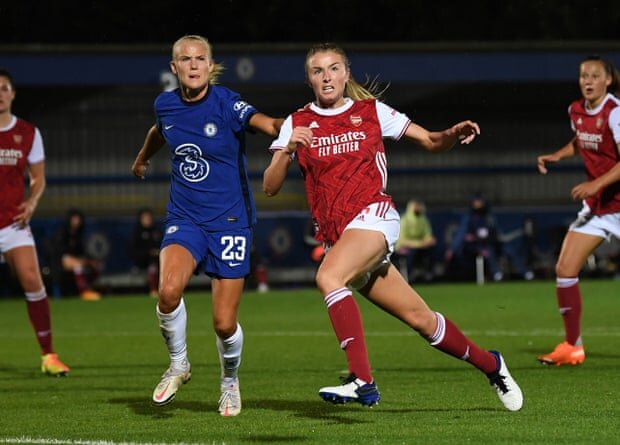
“Campbell said that they had been working with the government over the weekend to try to find a solution for girls' academies.” However, “The boys' FA Youth Cup will also continue if fixtures include two 'elite' clubs, while the women's senior competition is at present on hold due to all teams falling short of elite status.
Stephanie Hillborne, the chief executive of the charity Women in Sport, said: “It is almost unbelievable that these young women are penalised and must stop from playing because they’re not considered ‘elite’. In the women’s game, girls are not allowed to be legally contracted by a WSL club until they are 18 and are considered grassroots players up until that point. By contrast, some Premier League clubs offer paid scholarship wages to boys from the age of 16 until they become professional, but their female equivalents do not receive any form of remuneration. “It is shocking enough that the gender pay gap in football starts so young,” added Hillborne.” – Telegraph Sport
But is the notion of equality really that radical in 2020 and who is in control of these career-hindering semantics? By perpetuating an oppressive narrative with the discourse used throughout the media, inevitably filtering down to the players themselves and the rest of society, we are allowing the patriarchal narrative that men are better than women to continue, despite the necessary (occasionally tokenistic) work that has been done to promote women’s sport.
Boys at Tier 1 and 2 academies qualified for the government's "elite athlete" status, which allows for athletes aged 16 and over to continue training on elite talent pathways. As first reported by the Telegraph Sport though, the FA left many baffled - including government officials - when they deemed girls of the same age as falling outside of the elite definition.
“Clubs need to focus on not settling for less than the high standards they need to be setting for themselves.”
Caren Karney, Former England PlayerThe Women's FA Cup was also paused, as all teams involved in the first two rounds to be played in November fall outside of the "elite" definition needed for a government exemption. It means that female senior players in Tier 3 and below, some of who should be preparing for December European Championship qualifiers, will be out of action, while some boys' FA Cup fixtures will go ahead - as did the men's.
In the Nike Football Presents: A Female Focus workshop on the 16th November, Former England player, Karen Carney and former England player and coach, Hope Powell, discussed the importance of accessibility and setting standards. Carney stated that “clubs need to focus on not settling for less than the high standards they need to be setting for themselves.” Powell added to this by asking, “how do we get a talented girl to join and stay in the game if she can’t access the play?” Both accessibility and standards setting are imperative for the women’s game to be taken seriously by investors, fans, and young players. Talking about women’s football weekend, Powell went on to say that “the support and coverage is like never before. The City and London Derby are both fantastic products, encouraging young girls to play. But we need new people to support the game, and we need to do this by demanding standards of product to ensure fan engagement.” Interestingly, Marzena Bogdanowicz, the FA’s Head of Marketing and Commercial for Women's Football, on how to grow the women’s game asked: “how can we make sure we have the right people in the right places?” This question is constantly being asked of coaches, players and organisations, but the notion of challenging semantics doesn’t appear to be coming up. One of the many important questions that needs to be asked is: how do we go about changing the sexist semantics of sport?
In the spirit of the tumultuous times of 2020, let us briefly revisit the history of the Football Association. Historically, the FA was formed on the 26th October, 1863. Given the societally enforced narrative of the housewife at that time, women weren’t at all considered in the nationwide development of England’s favourite sport. It wasn’t until 1894 that the first women’s game occurred, with all proceeds of the match going directly to charity. By showcasing the women’s game as a charitable cause, the narrative immediately takes professionalism away from the lens and focuses on leisure – implying that women play as a hobby rather than a career pathway. The FA directly proposed that “an excessive proportion of the [gate] receipts are absorbed in expenses and an inadequate percentage devoted to charitable objects”. No such obligation to donate profits to charity existed for men’s clubs and no proof of financial impropriety was presented, but there was little the women’s clubs could do in response.”
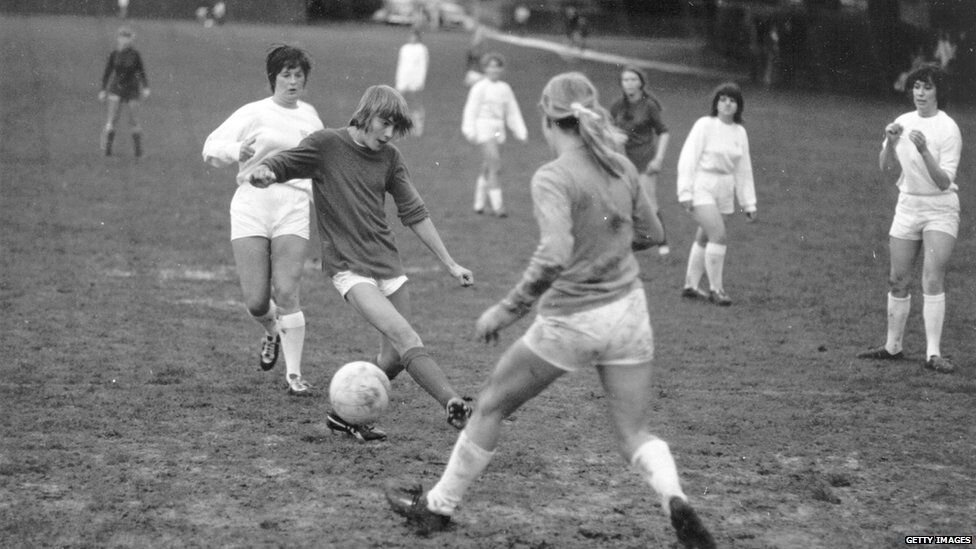
“They’re training to become professional players, just like the boys are. But unfortunately, it’s not seen that way in terms of governance and that’s one of the things we’ve got to change.”
Casey Stoney, MAN UTD ManagerBut sexism in football isn’t limited to restricting womens’ games to charitable events and promoting mens’ as investment opportunities. “The Munitionettes were part of the female workforce that took up war-time employment in the production of munitions during the First World War, as both the demand for munitions at the war front increased and the male workforce was depleted.” And despite the “great reluctance to introduce women into this type of work, with trade unions concerned about how this would affect the working rights of the men upon their return from war, the hostility of existing male workers to women encroaching on their job opportunities and the general uncertainty as to whether or not women would be capable of such work.”
And within the “National Union of Clerks in 1916: “EQUAL PAY [ACT]. There can be no possible doubt that to safeguard the interests of men enlisting that the same rate of pay must be paid to the women undertaking their duties. But it may be found that work previously done by two men is now divided amongst three women. In this case the aggregate salaries must not be less than the total amount paid to the two men. This ensures that the Employer get financial inducement to replace the male clerk by a lower paid female". (14th December 1916, HH31/27/17)
During this time, “the factory workers began playing football in their spare time and eventually formed football teams. Although women’s football was not unheard of before WWI, it did not gain anywhere near the same popularity that the womxn’s football teams developed during the War.” The Government utilised the power of advertising for financial gain and “encouraged women to play football as the games boosted morale and reinforced the image that women were capable of jobs deemed only appropriate for men.” But managed to keep sexist restrictions in place by ensuring that “all of the matches women played raised money for War charities.” In doing so, this ‘football for leisure’ notion filtered down through the game since 1918 via oppressive semantics disguising restrictions. For example, “on 31st March 1917 The Lincolnshire Chronicle reported on a match between the Lincoln and Derby Munition Girls: “well, readers, to be candid, this game was very funny in many ways…most of us went to scoff (though not unkindly, I’m sure).”
“After the War, the 1919 Restoration of Pre-War Practices Act meant that many women were forced to leave their jobs in the factories and return to their pre-war roles. Many of the football teams formed out of the munitions factories quickly disappeared. Women’s football ironically reached its peak in popularity after the War, proving to be as popular as men’s football,” which led the Football Association to react by banning women from playing entirely on the 5th of December, 1921. The FA “encouraged associated clubs “to refuse the use of their grounds for [women’s] matches." They deemed “the game of football quite unsuitable for females and ought not to be encouraged.” This ban was justified by the FA by suggesting that because women’s games were charitable – which they enforced in the first place – they weren’t sustainable, and the men’s more commercial approach was best for the FA. “Women did not play professionally again until after 1971 when the ban was finally lifted.”
With this initial ban in mind, and based on the systematic sexism within the FA, it isn't surprising that yet another ban has occurred after all the supposed progress that has been made, and leads me to ask how sexism has morphed in women’s football over time, and what does it look like in 2020, leading into 2021? What's really in the undercurrents underneath the glossy campaigns and sponsorships, and how do we, as the women’s sporting community, grab it by the patriarchal balls and rip it to shreds?
